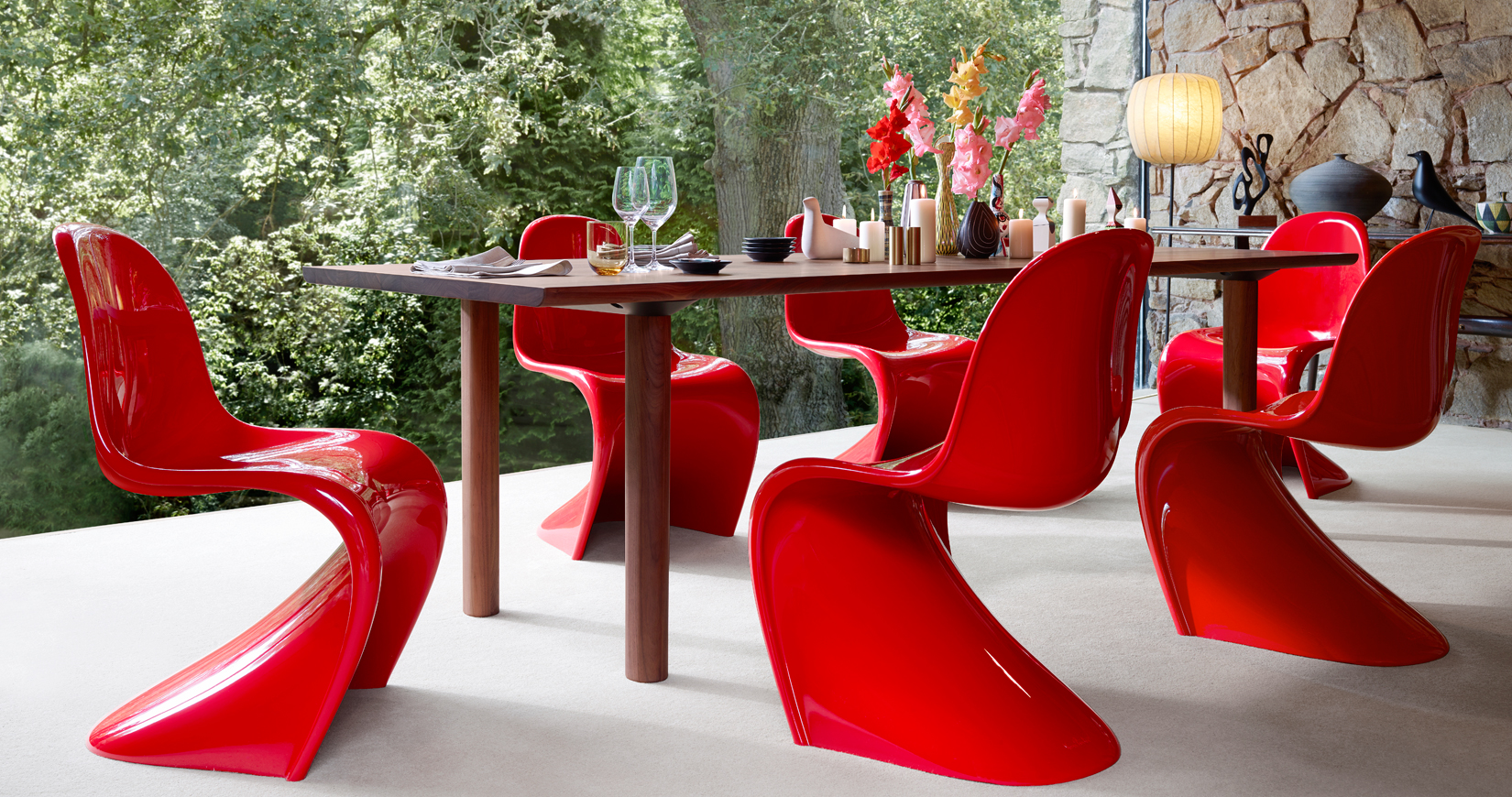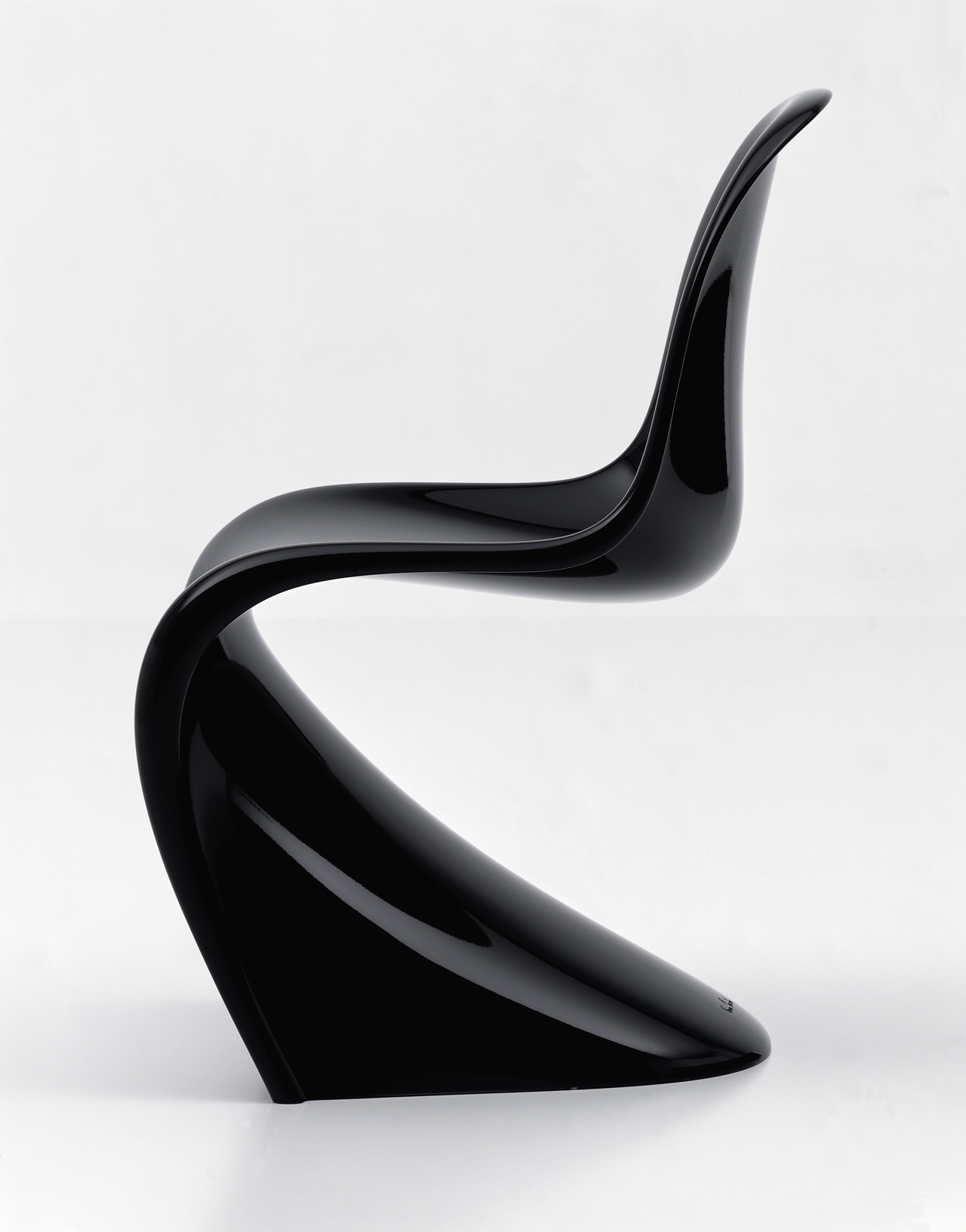Copyright © 2025 Motivate Media Group. All rights reserved.
Striking and innovative: the Panton Chair by Verner Panton
A design icon that had to wait for production methods to catch up.

Sometimes, iconic products move from the designer’s imagination to manufacture in a matter of weeks. Others slowly move through several iterations and take years to reach production. The Panton Chair endured such a prolonged gestation.
Verner Panton began his career as an artist in Odense before studying architecture at the Royal Danish Academy of Art in Copenhagen, from where he graduated in 1951.
After two tempestuous years working at the architectural practice of Danish architect and furniture designer Arne Jacobsen, Panton set up his own design and architectural office, where he applied his unconventional approach both to innovative architectural proposals and to the creation of a chair without legs or a discernible back.
The initial sketches and design drawings for what would become the Panton Chair were made by Panton in the mid-1950s, and in 1960 he created his first model, which was formed using a plaster-cast.

It was not until Panton met Willi Fehlbaum from furniture manufacturer Vitra in the mid-1960s that a production version of the advanced chair became a possibility. The first models were formed from cold-pressed polyester strengthened with fibreglass; they were heavy and required a lot of labour-intensive finishing.
A change of material allowed the cost of the chair to come down, and in 1968 Vitra began serial production of the final version, which was available in seven different colours and sold by Herman Miller.
The production model, defined by its organic shapes, was the world’s first single-form injection-moulded plastic chair. Alternatively known as the Stacking Chair or S Chair and now officially known as the Panton Chair Classic, it became Panton’s most famous design.
In 1999 Vitra introduced a lower-cost version made of polypropylene, the Panton Chair, which is also suitable for outdoor use.
The Panton Chair has been widely exhibited around the world and currently forms part of the permanent collections of some of the world’s most famous design museums, including the Museum of Modern Art in New York, the Design Museum in London, the German Historical Museum in Berlin and the Danish Museum of Art & Design in Copenhagen.
The Latest
Textures That Transform
Aura Living’s AW24 collection showcases the elegance of contrast and harmony
Form Meets Function
Laufen prioritises design, functionality and sustainability in its latest collections
Preserving Culture, Inspiring Creativity
Discover the Legacy of a Saudi Art Space: Prince Faisal bin Fahd Arts Hall explores the Hall’s enduring influence on the cultural fabric of Saudi Arabia
Channelling the Dada Spirit
Free-spirited and creative, The Home Hotel in Zurich injects a sense of whimsy into a former paper factory
id Most Wanted- January 2025
Falaj Collection by Aljoud Lootah Design
Things to Covet in January
identity selects warm-toned furniture pieces and objets that align with Pantone’s colour of the year
Shaping the Future of Workspaces by MillerKnoll
Stacy Stewart, Regional Director Middle East & Africa of MillerKnoll discusses the future and evolution of design in workspaces with identity.
Shaping Urban Transformation
Gensler’s Design Forecast Report 2025 identifies the top global design trends that will impact the real estate and built environment this year
Unveiling Attainable Luxury
Kamdar Developments has launched 105 Residences, a new high-end development in Jumeirah Village Circle.
The Muse
Located in the heart of Jumeirah Garden City, formerly known as ‘New Satwa’, The Muse adds to the urban fabric of the area
Cultural Immersion Meets Refined Luxury
The Chedi Hegra opens its doors in AlUla’s UNESCO World Heritage Site
Redefining Coastal Luxury
Sunshine Bay on Al Marjan island combines seaside views, exceptional design, and world-class amenities to create a unique waterfront haven
















